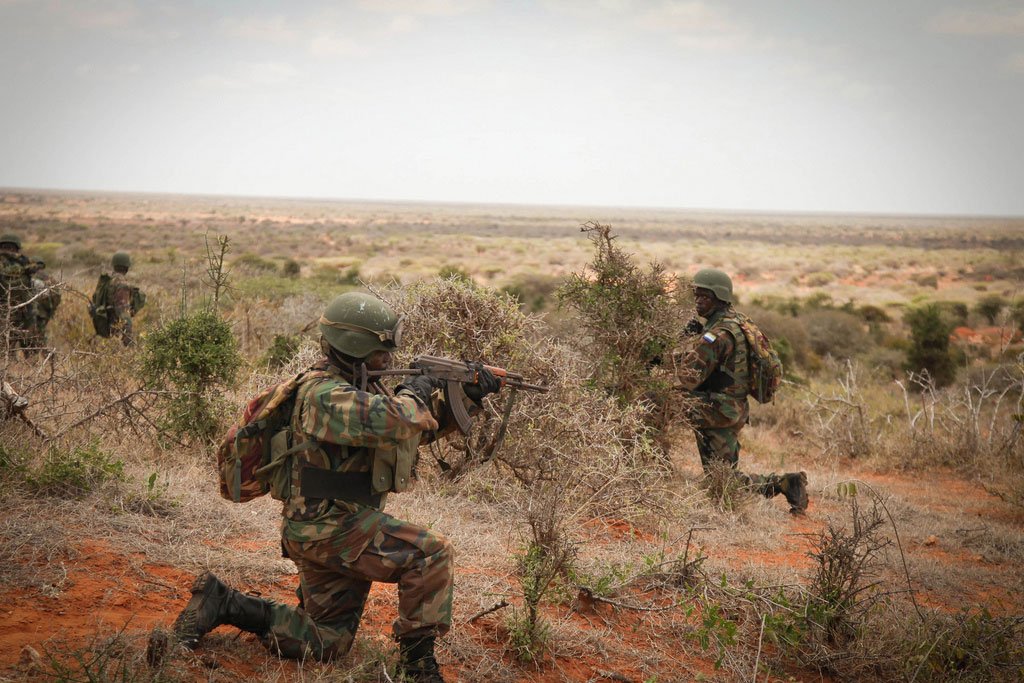United States Special Forces launched a helicopter raid on an Al Shabaab controlled-town on Tuesday, just days after a US airstrike killed 150 suspected Al Shabaab fighters on Saturday. These operations are likely to have caused more fatalities in one week than all known US counter terror strikes in Somalia over the last nine years combined.
This escalation in US engagement marks a sharp and immediate departure from the standard American approach to Somalia over the last decade, where Al Shabaab fighters have been heavily observed, but rarely attacked.
Noting that US engagement with Al Shabaab has intensified over the last week, the head of US Africa Command, General David Rodriguez, told the Senate Armed Services Committee on Tuesday that “Right now in Somalia, there has been a tactical upswing of Al Shabaab activities, [and] we are doing everything we can to support [the African Union’s] troop-contributing countries to ensure that is a temporary change.”
The US has a complex and often problematic record of intervention in Somalia after the state collapsed in 1991. US decision makers have been hesitant to commit many “boots on the ground” since a failed intervention in 1993, made infamous by images of 18 US servicemen who were dragged through the streets of Mogadishu after their aircraft was shot down. That “Black Hawk Down” incident has informed US policy toward Somalia for decades hence.
Perhaps, until now.
Recent shifts in the African Union Mission in Somalia [AMISOM]’s operational environment have caused the US to take more aggressive and direct action against Al Shabaab. Pentagon Press Secretary Peter Cook noted that the US carried out the strike on Saturday in “self defense.” According to the Pentagon, the fighters at Raso “were scheduled to depart the camp” and “posed an imminent threat” to both US and AMISOM personnel who were close by.
AMISOM has been fighting to reduce the influence of Al Shabaab in Somalia for nearly a decade, with US support. The US military has a series of small installations dotted across Africa; significantly, the US has a large presence in Djibouti at Camp Lemonnier, which is likely to have been the site used for take-off by the aircraft used in both operations.
Hours after the commanders of US Special Operations and US Africa Command left Tuesday’s Senate hearing, US Special Operations forces, working alongside Somali troops, are reported to have landed outside Awdhegle, which has a strong Al Shabaab presence. US personnel moved into the town at night to launch a surprise raid on Al Shabaab forces. Mohamed Hassan, a resident of Awdhegle, told the Associated Press, “there was gunfire between militants and Al Shabaab foot soldiers that started near the police station.”
The raid followed an airstrike on Saturday that targeted a ceremony for Al Shabaab fighters as they marked the end of their training at Raso Camp, which the Pentagon has labeled “a training facility” for the violent extremist organization. The US faces high barriers to conducting these types of attacks, as the AFRICOM Commander emphasized that the camps Al Shabaab uses to train recruits for violent extremism “are transitory, so they pop up and move around,” making it hard to estimate how many other Al Shabaab training camps may be operational at the present time.
Al Shabaab’s power and influence has ebbed and flowed in recent years: in 2011, AMISOM forced the group out of Somalia’s capital, Mogadishu, and Al Shabaab had to refocus its efforts on holding smaller towns and rural areas as a result. But even in its diminished form, the group has been a constant threat to the Somali government and the troops that protect them. Al Shabaab is also cause for ongoing concern in Kenya, as the group has continued to launch attacks on Kenyan citizens at home as well as troops serving in neighboring Somalia.
General Rodriguez told the Senate Armed Services Committee on Tuesday that from his perspective, “Al Shabaab remains a continuing threat to US persons and Western interests, and is conducting almost daily lethal asymmetric attacks in Somalia against African Union Mission in Somalia [AMISOM] troops.”
As long as these perceptions of the threat posed by Al Shabaab remain unchanged, we can expect to see more US intervention in Somalia in 2016.
